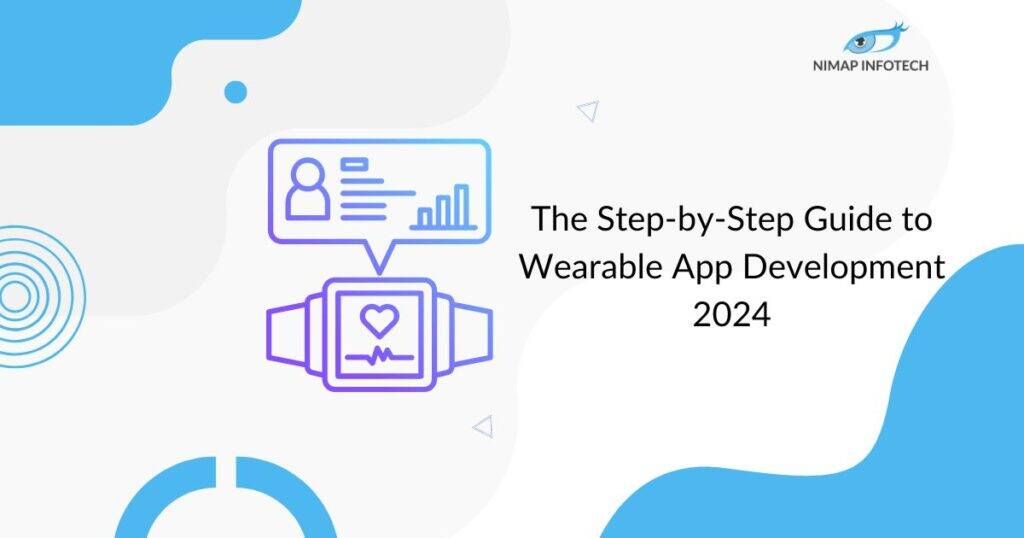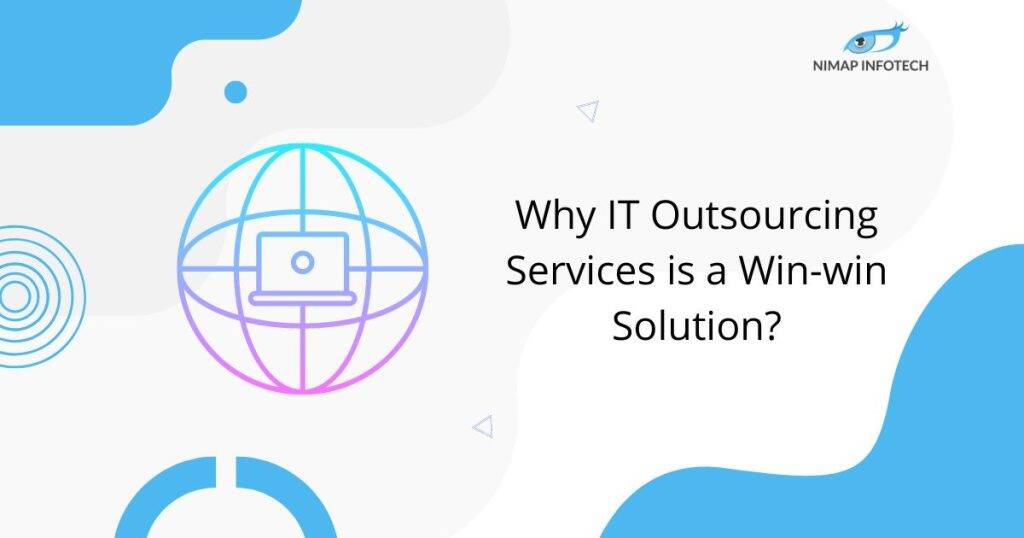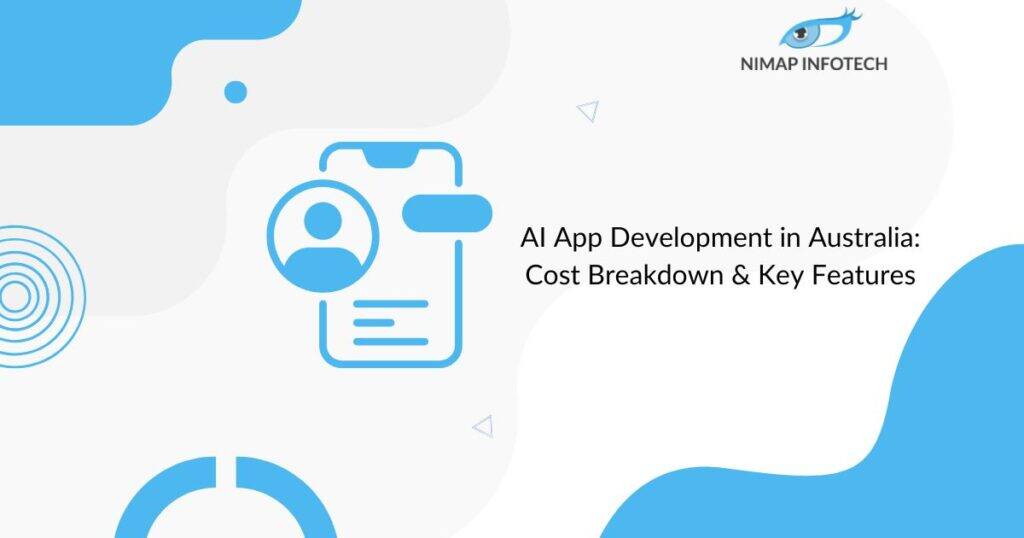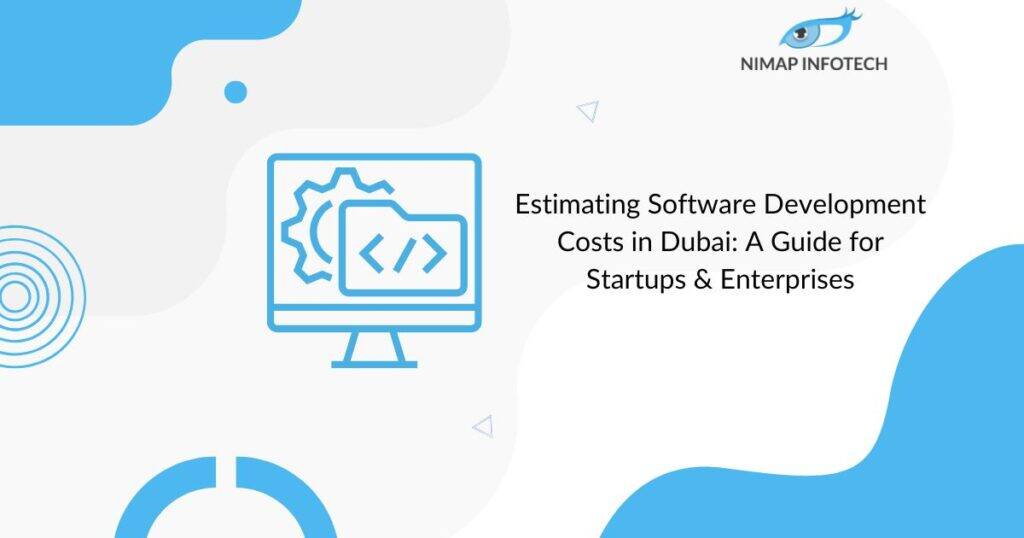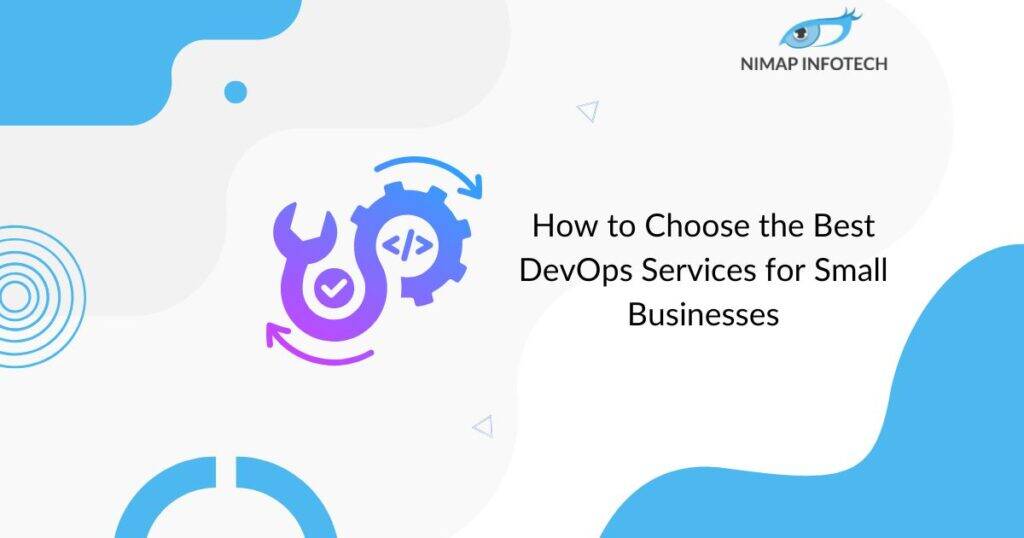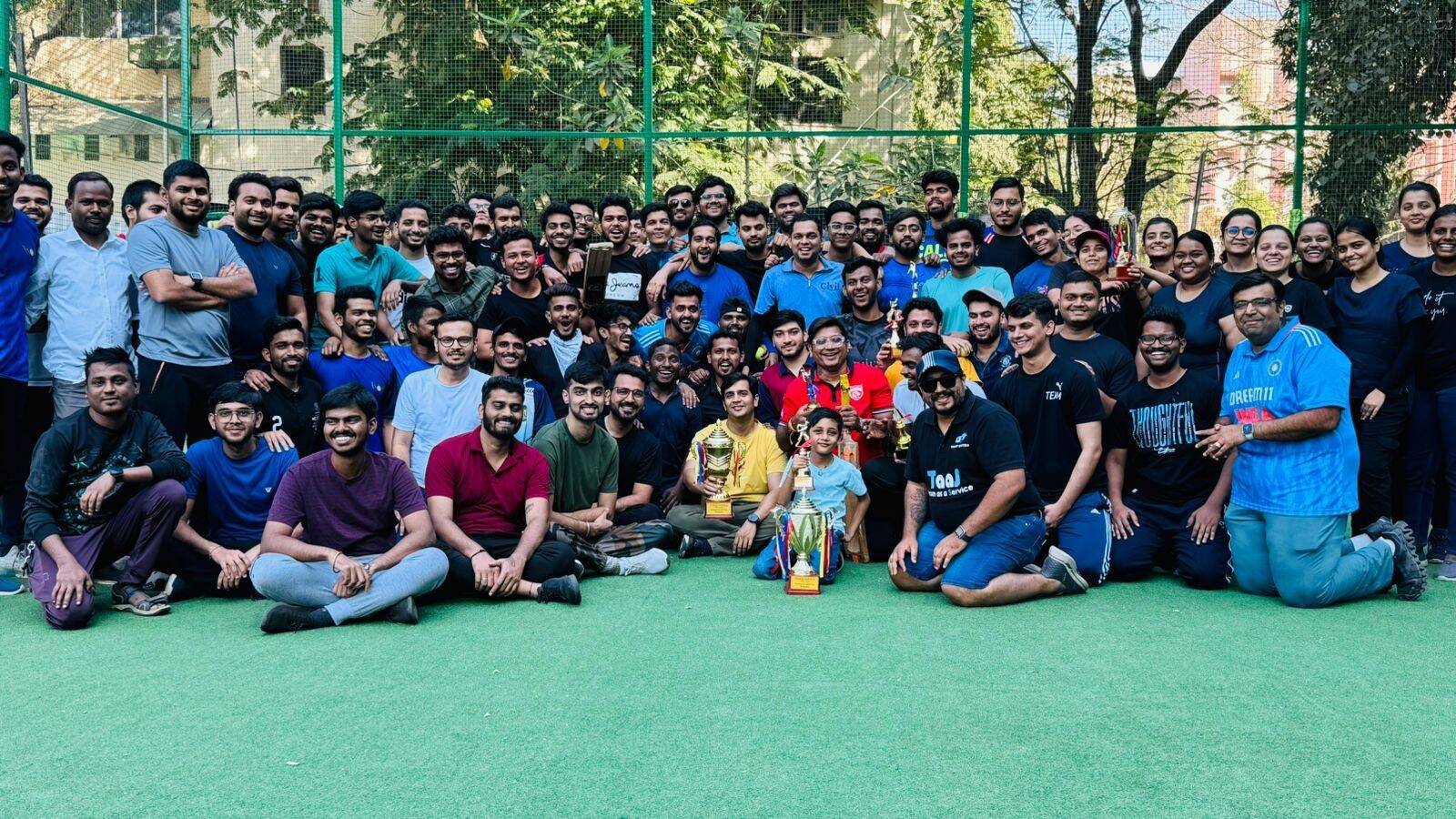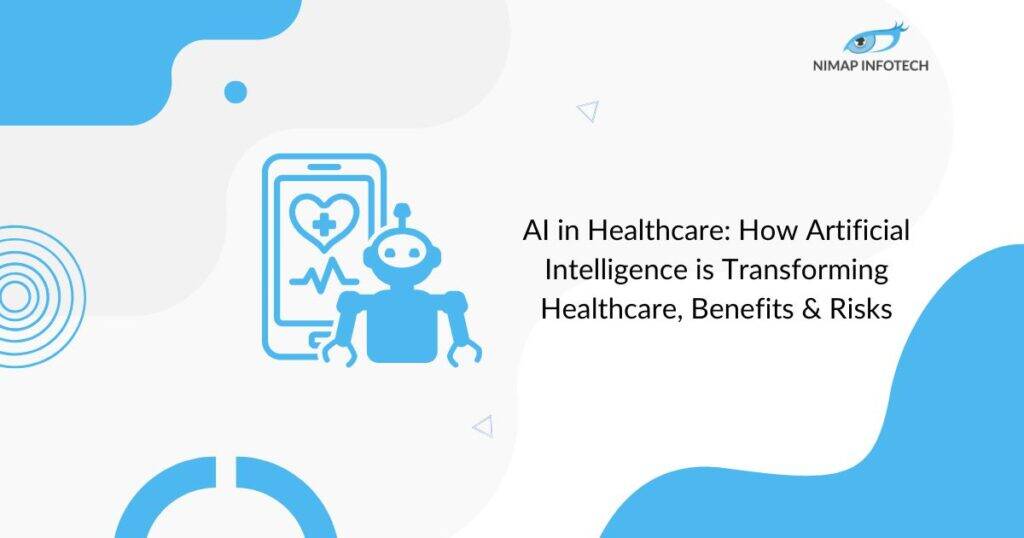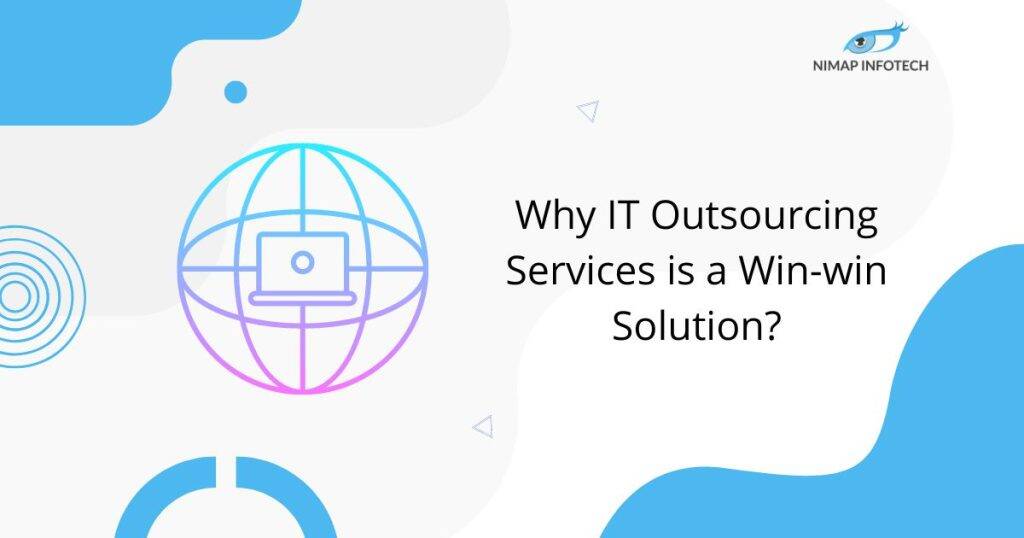In recent years, wearable app development has seen a significant rise, driven by the growing popularity of gadgets like fitness trackers, augmented reality glasses, and smartwatches. As wearables become more widespread, the development of applications tailored to these devices has accelerated, focusing on enhancing user experience and providing valuable functionality.
In this blog, we at Nimap as a wearable app development company will look at the many kinds of wearable apps, the commercial potential they offer, and the important factors to consider when creating wearable app prototypes.
Wearable app development thrives on its convenience and stylish design, driving the popularity of wearables. No matter how amazing your product is, if it does not become firmly ingrained in your target market’s daily life through wearables like fitness trackers, smart glasses (Google Glass), wristwatches, and so forth, they will probably choose to shop elsewhere rather than wait for your competition. This blog post from Nimap which is the best wearable app development company provides all the information you need to know about the wearable app development process, including its cost and how to design your app, all while keeping in mind your clients’ constantly shifting needs.
Table of Contents
ToggleWhat is Wearable App Development?
Developing apps for wearable technology, such as fitness trackers, augmented reality glasses, and smartwatches, is known as wearable app development. These applications make use of the special capabilities of wearables like sensors and connectivity options to offer consumers individualized and practical experiences. Wearable apps are transforming the way we use technology in our daily lives, whether it’s for tracking fitness objectives, getting notifications while on the road, or interacting with smart home appliances.
Types of Wearable Apps
Wearable apps can be generally classified into many sorts according to their intended use and functionality. The following are some of the most popular categories of wearable apps:
Apps for Health & Fitness
Among the most downloaded wearable app categories are those for fitness and health. These apps can track numerous health parameters, including steps taken, calories burnt, heart rate, and sleep patterns. Personalized exercise regimens, dietary monitoring, and motivational tools are frequently offered to users to assist them in reaching their fitness objectives.
Lifestyle Apps
Numerous user needs, such as communication, entertainment, and productivity, are met by lifestyle apps. Wearable apps, for instance, let users manage smart home appliances, listen to music, access calendar information, and even make payments.
Apps for Navigation
Wearable navigation apps give consumers real-time traffic updates and turn-by-turn guidance. Runners, cyclists, and hikers who like to explore new routes without having to check their phones frequently will find these apps especially helpful.
Apps for Medicine & Healthcare
Wearable medical and healthcare apps can monitor several illnesses, including asthma, diabetes, and high blood pressure. They can also offer telemedicine services, emergency notifications, and prescription reminders to help people better manage their health.
Apps for Augmented Reality (AR)
AR apps give users better experiences by superimposing digital data on the actual environment. Among other things, wearable augmented reality apps can be utilized for training, education, gaming, and navigation.
Gaming Apps
Wearable gaming apps make gaming more immersive by utilizing the device’s sensors and inputs to enable interactive gameplay. These applications are especially well-liked on augmented reality glasses and smartwatches.
Benefits of Wearable App Development Technology for Business
This comprehensive list of benefits is designed based on the business needs, objectives, and target audience. Developing wearable apps for business offers a wide array of benefits that can enhance customer engagement, improve operational efficiency, and drive innovation. Here is a detailed list of benefits:
Personalized Experiences
- Wearable apps can offer personalized experiences based on real-time data, such as health metrics, location, and preferences, increasing customer satisfaction.
Proximity Marketing
- Wearable devices enable businesses to send targeted promotions and offers based on a customer’s location, boosting sales and engagement.
Improved Accessibility
- Wearable apps allow users to interact with businesses more conveniently, often hands-free, making it easier to engage with services on the go.
Continuous Connectivity
- Wearables keep users constantly connected to your brand, reinforcing brand presence and building loyalty through frequent interactions.
Gamification
- By integrating reward systems and gamified experiences, businesses can encourage repeat engagement and foster a sense of community among users.
Real-time Data Collection
- Wearable devices can collect real-time data that businesses can analyze to optimize operations, monitor employee performance, and make data-driven decisions.
Streamlined Processes
- Wearables can help automate certain tasks, such as inventory management or time tracking, reducing manual labor and improving accuracy.
Early Adoption of Technology
- By developing wearable apps, businesses position themselves as innovators in their industry, attracting tech-savvy customers and gaining a competitive edge.
Custom Solutions
- Wearable apps can be tailored to specific business needs, offering unique solutions that competitors may not have, thereby differentiating your brand in the market.
Customer Behaviour Analysis
- Wearables provide insights into customer behaviors and preferences, allowing businesses to refine their products, services, and marketing strategies.
Predictive Analytics
- The data collected from wearables can be used for predictive analytics, helping businesses anticipate customer needs and trends and enabling proactive decision-making.
IoT Integration
- Wearable apps can be integrated with IoT devices, enabling businesses to create a more connected and intelligent ecosystem for monitoring, automation, and data collection.
Cross-platform Compatibility
- Wearable apps can be designed to work seamlessly with smartphones, tablets, and other devices, ensuring a unified user experience across platforms.
Also Read: App Development: The Ultimate Guide From Idea to Launch
A Step-by-step Guide to Wearable App Development 2025
Due to particular constraints, designing wearable apps is challenging, so it is critical to plan development from a technical standpoint. Concentrating on the business component is much more crucial because business logic serves as the foundation for all upcoming functionality. This is a how-to tutorial for creating, organizing, and releasing a wearable app.
Before embarking on the development or outsourcing of a wearable app, it’s essential to have a clear vision of your goals. Defining exactly what you want to achieve with the app is the key first step toward success. Wearable devices offer a wide range of use cases, so it’s best to begin with a focused proposal that targets one or two specific needs. To refine your concept, consider conducting the following studies:
User Persona Research
- Gain a deep understanding of your potential users—their needs, preferences, and pain points.
Market Investigation
- Explore the current market landscape to identify opportunities and gaps that your app can address.
Competitor Analysis
- Examine what your competitors are offering and find ways to differentiate your app with unique features or a better user experience.
Target Audience Identification
- Pinpoint the specific demographic or user group that would benefit most from your app.
Product-market Fit
- Ensure that your app not only meets user needs but also aligns with market demands, paving the way for success.
Focusing on these key areas will equip you to create a compelling proposal that will lay the foundation for a successful wearable app.
Find a Reliable Supplier
There are several methods you may use to find the finest wearable app development company based on your needs and budget:
1. Consult your friends or partners for recommendations.
2. Look for reviews using online directories.
3. Look up details about possible suppliers on their websites and in their portfolios.
4. Seek expert content and get in touch with potential suppliers.
Select the Best Platform for Your Wearable App Development
Given the vast and diverse landscape of wearable technology, choosing the correct platform for your app is crucial. Each category presents unique opportunities and challenges. Consulting with an experienced wearable app development agency can help you choose the platform that aligns best with your business goals and target audience, ensuring that your app stands out in this dynamic field.
Craft an Impressive UI and UX for Your Wearable App
The design of wearable apps’ user interface and user experience is very different from that of mobile UI/UX. Therefore, it is essential to hire a UI/UX designer with experience developing UI/UX for wearable devices. In addition to being significantly smaller than mobile devices, wearables also offer fewer UI elements and controls. In a similar vein, avoid making UI elements too small and instead make them big enough for consumers to use their fingers to navigate the app. Ensure that every important component of your interface is easily observable. Use simple typefaces and a minimalist layout to make your UI easy to use.
Think About Battery Usage
Because wearable device batteries are not as powerful as those in mobile devices, developers of wearables must take extra care to minimize battery consumption by their apps. They should also consider memory utilization. Developing lightweight and easy-to-load code will assist developers in overcoming these issues faced by wearable devices.
Attend Security as Soon as You Can
Make a security strategy before beginning a wearable device development project. This component is particularly crucial given that wearable apps for healthcare must comply with laws like HIPAA. If you don’t care about your system’s security, hackers can use Wi-Fi to obtain user data, especially on public networks.
To build a successful wearable app, it’s essential to determine its core functionality and prioritize features that deliver the most value. Start by identifying the key elements you need to develop first. A well-rounded wearable app typically includes the following features:
Push Notifications
- Keep users informed with timely alerts and updates directly on their wearable devices.
Navigation and Controls
- Ensure smooth and intuitive navigation, allowing users to interact with the app’s functionalities easily.
Voice Commands
- Enhance user experience by integrating voice control, enabling hands-free operation.
UI/UX Elements
- Design a user interface that is both visually appealing and optimized for small screens, ensuring an engaging user experience.
Data from Sensors
- Leverage built-in sensors to gather and display real-time data, adding value to the user experience.
Settings
- Provide customizable options so users can tailor the app to their preferences.
Prioritizing these features will help you create a wearable app that is functional, user-friendly, and ready to meet the needs of your target audience.
Select Your Stack of Technologies
Along with the operating systems of your target devices, you also need to carefully choose additional technologies for your app, like libraries, SDKs, APIs, and programming languages.
Make, Release, and Manage Your Application
Once all features, technologies, and platforms have been selected, the most challenging portion is finished. You must develop and test your application before uploading it to the app store. You must also update your application frequently to keep it safe, functional, and current. The wearable software needs to use the most recent third-party libraries, be updated frequently for security and performance, and be adjusted to new operating systems.
Challenges Associated With Wearable App Development Technology
Developing wearable apps comes with its own set of challenges, from technical limitations to user experience considerations. Below is a detailed list of these challenges, along with corresponding solutions:
1. Limited Screen Size
Wearable devices, especially smartwatches and fitness trackers, have small screens, which limits the amount of information that can be displayed and the complexity of interactions.
Solution:
- Prioritize essential information and design a minimalist user interface (UI). Employ concise, clear text and intuitive icons to ensure usability.
2. Battery Life Constraints
Wearable devices have smaller batteries, making energy efficiency a critical concern in app development.
Solution:
- Optimize the app’s performance by minimizing background processes, reducing the frequency of data updates, and using energy-efficient coding practices.
- Utilize power-saving features provided by the device’s operating system, such as dark mode and low-power states.
3. Connectivity Issues
Wearables often rely on a stable connection to smartphones or the internet, which can be disrupted or unavailable, leading to a degraded user experience.
Solution:
- Design the app to function offline when necessary, storing data locally and syncing when the connection is restored.
- Implement seamless data synchronization and error-handling mechanisms to ensure a smooth user experience despite connectivity challenges.
4. Device Fragmentation
The wearable market is fragmented, with numerous devices running on different platforms, each with its own hardware specifications and software requirements.
Solution:
- Focus on cross-platform development frameworks that support multiple devices and operating systems.
- Develop a scalable app architecture that can be easily adapted to different screen sizes, resolutions, and hardware capabilities.
- Regularly test the app on various devices to ensure compatibility and performance.
6. User Experience (UX) Design
Creating an intuitive and enjoyable user experience on a small, wearable device is challenging, especially when users expect seamless interaction with minimal effort.
Solution:
- Focus on creating a simple, intuitive design with easy navigation and quick access to frequently used features.
- Incorporate haptic feedback and voice commands to enhance interactivity.
7. Hardware Limitations
Compared to smartphones and other devices, wearables have limited processing power, memory, and storage, which can restrict an app’s functionality.
Solution:
- Optimize the app’s code and assets to reduce memory and CPU usage.
- Use cloud-based processing for tasks that require more power than the wearable can provide.
- Design the app to offload heavy tasks to paired devices like smartphones when possible.
8. Maintaining Consistent Performance
It can be difficult to ensure consistent app performance across different wearable devices and under varying conditions (e.g., low battery, poor connectivity).
Solution:
- Regularly monitor app performance through analytics and user feedback.
- Implement adaptive performance settings that adjust based on device conditions, such as lowering animation complexity or reducing background activity when battery levels are low.
9. App Store Approval
Getting a wearable app approved on various app stores can be a complex process, with each platform having its own set of guidelines and requirements.
Solution:
- Familiarize yourself with the guidelines of each app store (e.g., Apple Watch App Store, Google Play) early in the development process.
- Conduct thorough testing to avoid common issues that could lead to rejection.
10. User Retention and Engagement
Retaining users and keeping them engaged with a wearable app can be challenging, as many users may lose interest after initial use.
Solution:
- Implement features like push notifications, rewards systems, and personalized content to keep users engaged.
- Based on user feedback, regularly update the app with new features and improvements.
- Focus on creating a valuable, seamless experience that encourages daily use.
Addressing these challenges with the right strategies can help you develop a successful wearable app that meets user expectations and performs well in the market.
What is the Cost of Developing Wearable Apps?
The cost of designing wearable apps can vary widely, often aligning with the standard industry pricing for mobile app development. In some instances, the cost of wearable app development is bundled with the overall cost of mobile app development, particularly if the wearable app serves as a companion to a mobile application. Factors that determine the cost of wearable app development:
Business Needs
- The specific requirements of your business and the purpose of the wearable app will significantly impact the overall cost.
Functionality
- The more advanced and specialized the features of your wearable app, the higher the development costs will be.
Outsourcing
- If you choose to outsource development to another country, this can affect costs depending on the location and the expertise of the developers.
Design Complexity
- More intricate designs and user interfaces can drive up costs, as they require more time and resources to create.
Given these variables, wearable app development often demands a higher budget, especially as the challenges and market demand increase. To navigate this complex landscape, it’s advisable to hire a reliable external developer with experience in wearable technology. Expert guidance can lead to smoother software production and help you manage costs more effectively.
How Can Nimap Help in Wearable App Development?
Nimap, a leading mobile app development company in India, who offers customized, robust, user-friendly, and scalable solutions tailored to SMEs, entrepreneurs, and enterprises across various industries. We hold our expertise in developing apps for iOS and Android. Our professional mobile app developers expertise helps them to seamlessly integrate the wearable app development technology with smooth and operating user interface .We are here to escalate your wearable app development process with the help of our following features:
Building Feature-rich, Reliable, and Secure Wearable Apps
- Our expertise extends to developing high-quality wearable apps for both Android and iOS, designed to meet your specific business needs.
Implementing Wearable-compatible Versions of Existing Apps
- We can adapt your current app to be fully compatible with wearable devices, ensuring a consistent and effective user experience across all platforms.
Developing Wearable Apps from Start to Finish
- From initial concept to final deployment, we manage the entire development process, delivering a fully functional and polished wearable app.
Reducing Operational and Development Costs
- By optimizing processes and leveraging our expertise, we help you minimize costs while maintaining high standards of quality and performance.
At Nimap we are committed to delivering wearable apps that drive value and success for your business.
Ready to Innovate? Start Your Wearable App Development Journey Today!
In conclusion, every wearable business is realizing its potential and bringing innovative concepts to reality for the good of humanity. Wearable apps provide a range of features, beyond monitoring health and location. It is essential to comprehend the numerous wearable technology components to design these apps. If you’re seeking for wearable app development solutions, contact Nimap to get started on your application development.
Read More: Outsourcing App Development: Exploring Benefits and Costs
Author
-

Sagar Nagda is the Founder and Owner of Nimap Infotech, a leading IT outsourcing and project management company specializing in web and mobile app development. With an MBA from Bocconi University, Italy, and a Digital Marketing specialization from UCLA, Sagar blends business acumen with digital expertise. He has organically scaled Nimap Infotech, serving 500+ clients with over 1200 projects delivered.
View all posts

